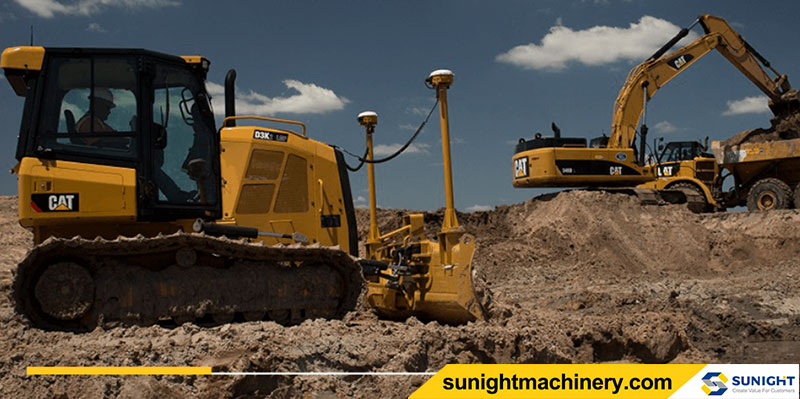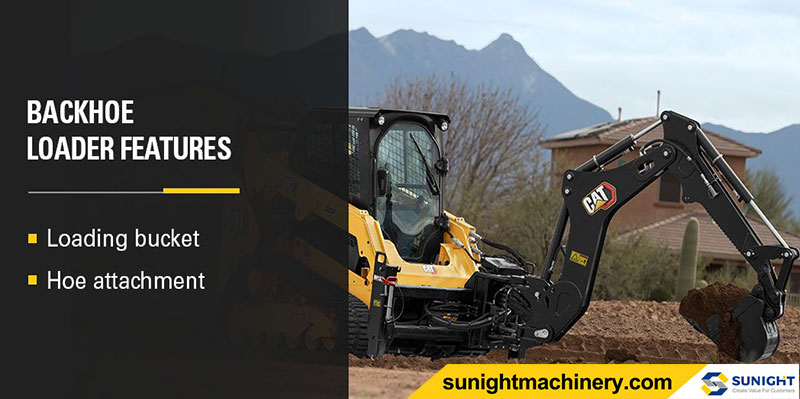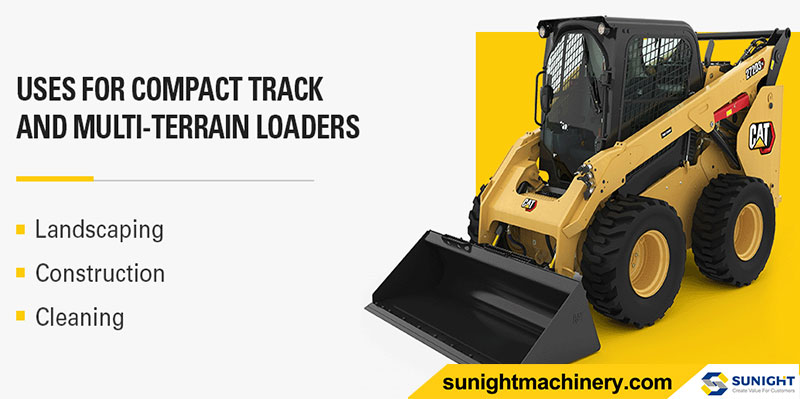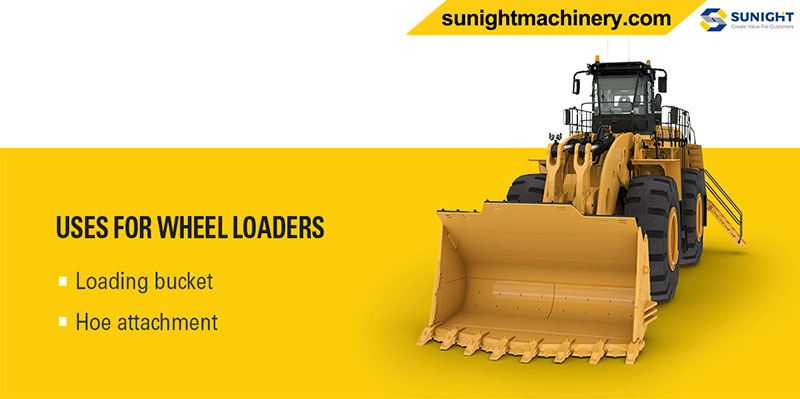Loader construction equipment is utilized in a broad range of applications that call for moving earth and other materials. Whether you’re landscaping, building roads, demolishing, recycling or you’re involved in a variety of other industries, there are many different types of loaders available to get the job done efficiently. While varying loader models are typically able to perform many of the same functions, understanding the differences is essential to optimizing the productivity, safety and longevity of your fleet.

One of the prime tasks of earthmoving is loading, moving and depositing material efficiently. Whether you manage small landscaping projects, run a mid-sized construction business or lead major civil engineering jobs, having the correct machinery to complete the task is crucial. Loaders are the most widely used tool for earthmoving, allowing you to move large amounts of rock, soil and other construction debris.
Many loader types are available to meet the needs of different construction sites. Jobs differ by necessary size, horsepower and loading capacity. It's important to understand the difference between the types so that you can choose the best one for your job site.
Read on for a comprehensive look at these different types of loaders:
- Backhoe loaders
- Skid steer loaders
- Compact track/multi-terrain loaders
- Wheel loaders
- Track loaders
1. BACKHOE LOADERS
Backhoe loaders are versatile instruments found on most construction sites. Their unique design allows for maximum efficiency, with these two defining features:

- Loading bucket: Located on the front, the loading bucket can suit a wide range of material handling applications. The buckets let you load, transport and dump materials quickly. The buckets can easily move rock, gravel, sand and other types of construction materials. After you've transported the materials, you can also use the buckets to clean the surrounding area when you complete the excavation job.
- Hoe attachment: Backhoes feature a hoe attachment on the back. You use these attachments to dig directly into materials. A hoe attachment has teeth that can make it easier to delve into the material and break it apart.
- Backhoes use wheels to move materials, differentiating them from equipment that uses tracks to stay upright. Wheels can boost efficiency by making it easier to maneuver your tool around your job site. Backhoes with wheels can move at fast speeds, allowing you to drive them directly between work locations without using a trailer.
USES FOR BACKHOES
Most backhoes have similar features and appearances. The most significant changes in design have occurred due to technological updates, such as improved safety features. However, backhoe models differ by their size, power and earthmoving ability. For instance, some backhoes are compact and suit confined areas, while others are larger and can move more materials.
Backhoes are frequently used in applications like:
- Construction: A backhoe can be used in a wide variety of construction applications. From digging up utility lines to breaking up concrete, you can find many ways to use a backhoe while on a construction site.
- Landscaping: You can also use a backhoe in landscaping projects, such as digging holes or moving debris out of the way.
- Excavating: Backhoes are also helpful for excavation projects. You could dig a hole with a backhoe and use the loading bucket to refill it.
2. SKID STEER LOADERS
Skid steer loaders are another useful loader type. Skid steers are excellent for light work and a fast-paced job site. These four-wheeled tools feature a unique movement design, allowing you to steer by skidding. During use, the operator locks one pair of tires and leaves the other side free. The action allows the machine to turn within a predefined radius. The specialized steering ability makes skid steer loaders ideal for tight spaces.
All skid steers have tires instead of tracks. The difference between wheels and tracks comes down to speed against weight distribution. Tires let a skid steer move quickly but maintain a connection to the ground. On the other hand, tracks make machines slower, but they put less pressure on their work environment.
The Cat Rental Store offers a variety of steer choices. All have turbocharged Cat C3.8 engines for top power performance. Cat skid steer loaders also have a wide range of work attachments that extend a skid steer’s reach across many construction-related duties.
USES FOR SKID STEER LOADERS
Skid steer's wide range of available attachments and speed options make them excellent tools for many applications. Here are some examples of skid steer uses:
- Trenching: Skid steers are useful in trenching applications. You can use a variety of attachments to complete many digging and trenching tasks.
- Debris removal: You can easily move debris with skid steers. For example, a snowfall might disrupt a construction site or road. You could attach a bucket to the skid steer loader and transport the snow more efficiently.
- Excavation: Many construction sites use skid steers to quickly clear and clean job sites.
3. COMPACT TRACK AND MULTI-TERRAIN LOADERS
Compact track loaders and multi-terrain loaders use similar steering structures. These types of equipment freeze one track set and route power to the opposite side. With this operating style, the loaders can make 360-degree turns within their radius.

Despite this, the two similar machines have a few key differences:
- Undergraduate design: The construction industry differentiates multi-terrain and compact loaders by their undercarriage design. A compact track loader uses more weight per square inch than a multi-terrain loader of the same size.
- Ideal conditions: The two also differ in their performance in various conditions. Compact track loaders perform well on solid and semi-solid surfaces like gravel and clay, while multi-terrain loaders are better suited for low-weight-supporting conditions like snow or sand. Compact track loaders use less ground pressure, tending to float above the ground rather than directly impale. Multi-terrain loaders can work in most conditions, with the exception of water.
- Traction levels: Compact track loaders have great traction because of their track cleats and even weight distribution. The traction affords them excellent stability on sloped ground and slippery surfaces like mud, snow and wet sand. Multi-terrain loaders have even more traction capabilities. They can hang onto the face of high inclines and severe slopes. Multi-terrain loaders can also work well on sensitive surfaces, like lawns and garden beds.
- Price: Multi-terrain loaders are usually the more expensive option because of their complex suspension and undercarriage.
- Overall, a good way to differentiate compact track loaders from multi-terrain loaders is that multi-terrain machines can do everything compact track loaders can accomplish, but a compact track loader can’t do everything a multi-terrain loader can.
USES FOR COMPACT TRACK AND MULTI-TERRAIN LOADERS
You can use compact track and multi-terrain loaders for a wide range of applications, such as:
- Landscaping: Compact track and multi-terrain loaders can suit landscaping environments. Both can work on the ground without directly impaling or harming the surfaces. You could also use the loaders to bring in landscaping materials or spread them around the site.
- Construction: The two machines are also helpful for many construction uses. From breaking up hard materials like concrete to transporting materials, these loaders are commonly found at many construction sites. Multi-terrain loaders can work in the majority of conditions, from steep slopes to wet sand. Their versatility makes them ideal for most construction sites, no matter the location.
- Cleaning: You can also use compact track and multi-terrain loaders for cleaning up sites. You could load materials and quicken the removal process with either option.
4. WHEEL LOADERS
Another option for construction loaders is wheel loaders. Front-end wheel loaders are excellent options for shoveling large volumes in a short time. This group includes a variety of types, such as:
- Compact wheel loaders
- Small wheel loaders
- Medium wheel loaders
- Large wheel loaders
USES FOR WHEEL LOADERS
Cat wheel loaders have the latest technology and built-in toughness to work in the most challenging applications. You’ll find wheel loaders in applications like:

Transporting materials: Wheel loaders are frequently used for moving materials. You can often find them in sand and gravel quarries where they can easily fill trucks. Cat wheel loaders are also common choices for moving industrial, agricultural and municipal waste.
General construction: You can use wheel loaders for many applications at construction sites. You can transport raw materials like rock and rubble to new locations or reload them into other vehicles. You could also use wheel loaders to dig into work sites or remove debris and excess materials.
5. TRACK LOADERS
Track loaders are another strong option for your construction site. These machines can help you maximize productivity in your industry. Track loaders have tracks instead of wheels, making them solid options for uneven terrain and rougher conditions. They're often better suited for challenging conditions than machines with wheels because of their tracks.
USES FOR TRACK LOADERS
Cat track loaders are available in many sizes and configurations to help you get the right machine for your job site, application and conditions. These machines are commonly found for uses like:
- Waste handling: Track loaders are ideal for moving and loading waste onto disposal trucks.
- Construction: Track loaders can move heavy loads across construction sites or move materials off site.
- Earthmoving tasks: From demolition to agriculture, many industries require earthmoving tasks. Track loaders can help you remove large amounts of earth and transport them to other locations.



